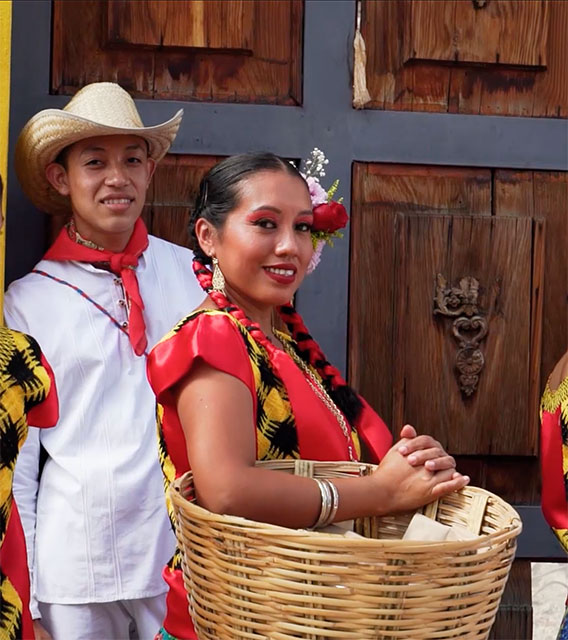The Day of the Dead, a tradition that stretches back thousands of years, is a cherished and captivating celebration in Oaxaca, Mexico. Recognized as Intangible Cultural Heritage, this vibrant and deeply spiritual festivity unites the past with the present, offering a unique glimpse into the rich tapestry of Mexican culture. Rooted in pre-Hispanic practices that worshipped death and paid tribute to the departed through offerings and rituals, the Day of the Dead has evolved into a fascinating fusion of Catholic influences and ancient traditions.
A Time for Remembrance: At its core, the Day of the Dead is a time to remember and honor those who have passed away. It’s believed that the souls of the deceased return to their families, and Oaxaqueños go to great lengths to ensure a warm and joyful welcome. This celebration, held over November 1st and 2nd, bridges the gap between the living and the departed, creating a profound connection that goes beyond the boundaries of life and death.
Altars Adorned with Tradition: The heart of Day of the Dead celebrations lies in the creation of intricate altars that honor the departed. These altars, lovingly adorned with skulls, marigold flowers, and copal incense, capture the essence of both pre-Hispanic customs and Catholic influences. While the exact origin of the Day of the Dead cannot be pinpointed to a single location in Mexico, the consensus among historians is that this tradition has ancient roots that date back over two millennia.
Pan de Muerto: A Symbol of Unity: No Day of the Dead celebration is complete without the traditional bread known as “Pan de Muerto.” This delectable bread symbolizes unity, with variations in flavor and style that reflect the region where it’s made. Ingredients like eggs, flour, cinnamon, and sesame seeds are masterfully combined to craft this special bread. Families gather to enjoy “Pan de Muerto” with steaming hot chocolate, creating a delectable tradition that strengthens bonds and bridges generations.
Unique Regional Celebrations: Oaxaca is a diverse region, and each community celebrates the Day of the Dead in its own unique way. The olives stew in Santa María Atzompa, Valles Centrales, signifies the start of the festivities and pays tribute to the souls of the departed. In Teotitlán del Valle, vibrant rugs, and traditional foods like yellow tamales and chocolate-atole grace the altars, creating a warm and inviting atmosphere.
Chinas Oaxaqueñas: A Dance of Pride and Respect: One of the most captivating elements of the Day of the Dead celebrations in Oaxaca is the Chinas Oaxaqueñas. These traditional dancers wear high-flying skirts and carry flower baskets on their heads, showcasing a unique blend of aesthetics and culture. During the Day of the Dead festivities, the vibrant colors of their flower baskets give way to the majestic yellow of marigold flowers, symbolizing respect and mourning for those who have passed on.
The Day of the Dead in Oaxaca, Mexico, is a testament to the enduring connection between the living and the departed. Through intricate altars, traditional foods, and vibrant celebrations, Oaxaqueños pay tribute to their ancestors and celebrate the richness of their cultural heritage. It is a time of reflection, remembrance, and unity, where death is celebrated with joy and life continues to flourish.




